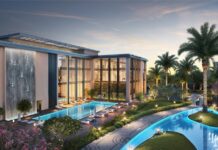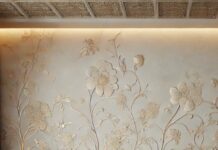Bengaluru, March 19, 2016: In the growing stature of the associative corporate sector, hospitality industry is one sector that is growing rapidly across the world. Growing business appetite along with increase in spending power of an individual, the hospitality industry is catering to higher number of attendees who are looking for hotels ranging from budget hotels to luxury ones. The hospitality sector broadly caters to two categories; work and leisure. There are spheres of convergence wherein components of leisure complement a work – travel focused property and vice versa; however broad contours remain well defined. On one end where hospitality is related to work travelers; the individuals consider factors such as accessibility, distance to airport, distance to major areas of business interest, well-tailored, no-nonsense service approach; on the other end hospitality related to leisure travelers consider factors such as proximity to tourist destinations, extra services, scale/area of the premises etc. Yet, there are certain common factors that are regarded by both the categories; quality of accommodations, quality of service as well as scope of area available. This article talks about hospitality from the eyes of travelers.
The hotel/hospitality industry can be sub-divided into two broad categories: Stand-alone infrastructures which are independent, self-serviced and self-sustained infrastructures catering to work travelers with in-house support; and Mixed Infrastructures that are a part of a larger property, part of mixed use residential/commercial/retail developments that operate out of a bigger infrastructure plan where the hospitality infrastructure enjoys cross-selling and support from varied service providers who are a part of the wider plan.
Stand-alone
A standalone property has the benefit of ‘flexibility’ wherein decision making can be immediate in a changing scenario. Therefore, it can take a stand on the kind of rate it wants to offer guests, unlike chain hotels which have long procedures of getting approvals. This seems to be a big advantage of business travelers who look for flexibility in terms of tariffs, meeting spaces and services at the hotels.
When we talk about stand-alone properties, location is regarded as one of the most prime consideration factor. There are two kinds of work travelers; one which is more of a transit traveler, who does not spend much time on a destination and is more of an in-out traveler. Such individuals look for stand-alone properties closer to the airports and railways. These travelers prefer to spend less time travelling, and hence base themselves out of a property close to the airports/railways where they catch up on their meetings and move out of the city. On the other hand are the travelers who travel and stay in cities for a longer period and hence they prefer properties that are more centrally located preferably in the Central Business District (CBD), Secondary Business District proximity or parts of SEZs and Industrial Parks, where they can utilize the business facilities and finds themselves close to all services they may need during their stay.
Keeping in mind the popularity of stand-alone properties for business travelers, it is important to incorporate certain design considerations when raising a stand-alone property.
For business travelers it is more about experience. As such travelers, travel extensively they look for properties that are welcoming and warm which makes them feel more relaxed. Hence a lot of stand-alone properties invest in building interiors that impart soothing ambience in their guest areas as well as guest rooms. The colors of walls, artifacts and the choice of lighting impacts how the traveler perceives the experience. A very bold color interior with lavish furniture in rooms can be a hindrance to the experience of the traveler but at the same time, warm pastel colors with contemporary design furniture will remove complexities that a work traveler can perceive. Alongside, it is also about the multiple interaction spaces that the property offers, which can be a factor for business travelers. Choice of meeting their peers at a café, over dinner, having conversation over drinks in a lounge, probably meeting in a formal boardroom environment or meeting casually in a lobby – can provide various options to the individual where they can find a suitable setting in relation to the type of meeting environment they seek.
Also, in terms of stays – the stand-alone properties can be mid to large infrastructure properties that boasts to 200+ room capacity across a well-defined hierarchy. Where a basic room can look after the basic needs of an individual, suites and premium category rooms can satisfy their customers’ needs in terms of luxury, abundance of space to move around, a desk for work long side views of the city, etc. A well-defined hierarchy of rooms will help in catering to all sections of business travelers ranging from corporates to small medium organizations. Added amenities within the campus will always be an attraction to work travelers as it gives them the opportunity to relax from a long travel or a day of hard-work. At this stage, health and fitness centers, spa and well-ness centers, beauty and personal grooming services will give individuals the time to look after themselves within a long and hectic working day.
Beach homes is an example which talk about the infrastructures, The development is planned around a luxury hotel which caters to a large number of serviced apartment suites. The hotel is accommodated within a single tower with another two towers of high end luxury apartments.
The three towers are all linked at the base with large dedicated lobbies to each tower. The developments includes a large list of amenities including restaurants, cafes, shops, spa, roof top bar and separate banquet hall wing.
Hospitality : A Part of Mixed Use development
A category with increasing popularity, as retail and mixed use developments increase along with commensurate increase in Floor area ratios (FAR), developments choose to incorporate hospitality components to the development, it works well for the development by bringing diversity , association with a hospitality brand .
The constructions of retails in the world-over is preferred on the Ground to Second floors, therefore the balance FAR gets utilized in hospitality. Since mixed-use developments locate themselves on high footfall zones like CBDs or high density residential neighborhoods, the allied hospitality component benefits by default. also, benefiting the retail sector.
The mixed use infrastructures are mostly small to mid size properties with not more them 200 keys in one entire structure. the denomination is the hierarchy of rooms which are either divided in 2 to 3 categories or have an exclusive service apartments. the another set can be the combination of above two categories but segregated in different towers or by different floors or separated by different access corridors.
The design consideration for the mixed use development is clean in terms of segregation of access to the units with respect to other components of the development by Segregated parking, valet , drop offs etc. The ease of access to the lower floors with retail facilities is the key criteria to make such developments. The retail or commercial sectors are easily accessible through the lobbies, lifts and escalators but at the same time not harming the security of the homes.
provision of smaller concierge lobby at the ground level coupled with regular lobby at the base floor of the hospitality segment. There is a Limited focus on options for food and beverages, idea being capitalizing on the options that the mixed use development has to offer
To make it more rousing there is a provision of recreational activities on the terrace and podium top.
Merchant Plaza is designed as a contemporary neighborhood shopping and commercial hub, a great example to explain mixed use hospitality development. The scheme is a blend of elements designed to please the 5 senses: Vision, Hearing, Touch, Fragrance and Taste. Merchant plaza has been conceptualized to address three distinct end-uses: Retail, Commercial and Hospitality. Giving the priority to the exclusivity of the end-use, the access points are segregated by means of separate lifts and staircases. The drop-off points are also separated, well- defined and earmarked for the respective zones of the development.
Service Apartments is another category which is a fastest growing segment among hospitality in the NCR , Bangalore and Mumbai – Pune region which is more prevalent in Secondary and peripheral business districts due to lower real estate costs
this sector have a clear synergy with IT and ITES segment, with manufacturing hubs where assignment related travel keeps stay durations longer. This Can double up as financial products in addition to real estate, act as rental income generators for the investor.
the service apartment sector allows for time-share cum rentable units with a service provider/hospitality brand on board. The design for the same is more flexible and have a possibility of shared ownership. The Most prevalent layout of being a Studio, followed by 1 Bedroom. these are more preferred with balconies , in a contrast to hotel rooms. These are more simple and clean on central facilities like food and recreation or health and fitness, takes advantage of the amenities that the campus mixed-use development brings.
Corporate Comm India (CCI Newswire)



















